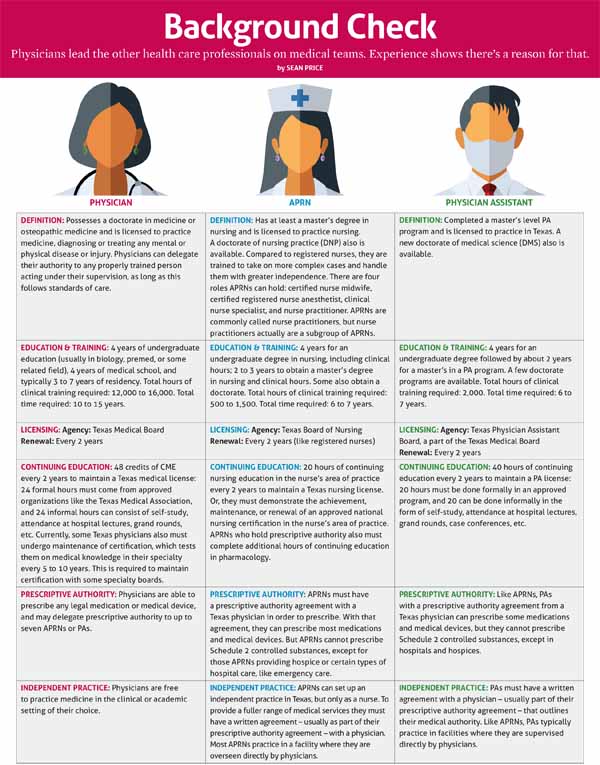The Texas Medical Association strongly opposes a piece of President Donald Trump’s recent executive order on Medicare that could expand the scope of practice of nonphysician practitioners (NPPs), such as advanced practice registered nurses (APRNs) and physician assistants (PAs).
The order, signed Oct. 3 as an alternative to “Medicare for All” proposals gives the federal Health and Human Services Department a one-year deadline to propose a regulation to ensure that services, “whether done by physicians, physician assistants, or nurse practitioners are appropriately reimbursed in accordance with work performed rather than the clinician’s occupation.”
“Know this: TMA will stand up for our profession and our patients to prevent this totally unwarranted scope-of-practice expansion from becoming reality,” Texas Medical Association President David C. Fleeger, MD, said.
Physicians may delegate certain duties and authority to NPPs – especially APRNs and PAs.
Because APRNs and PAs interact with so many patients, many assume NPPs are a type of physician or a physician-in-training. This mistaken perception is made worse by the eagerness of hospitals, clinics, and many nonphysician professionals to have patients see the care they get from NPPs as equivalent to that of physicians.
Physicians know better, and with good reason. The chart below compares how physicians, APRNs, and PAs in Texas are educated, trained, and employed in health care settings. It shows why APRNs and PAs are considered vital parts of medical teams – and why physicians are the leaders of those teams.
Also check out TMA’s tools for managing nonphysician providers plus CME on billing for NPP services.
For a printable version of the infographic below, click here.

Last Updated On
November 07, 2019
Originally Published On
October 09, 2019